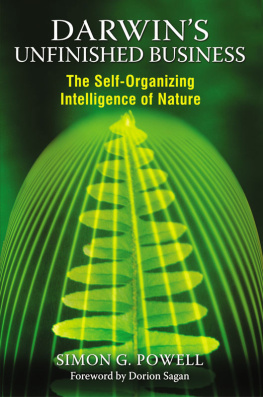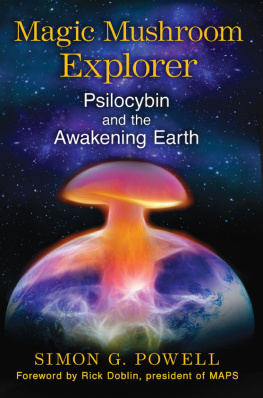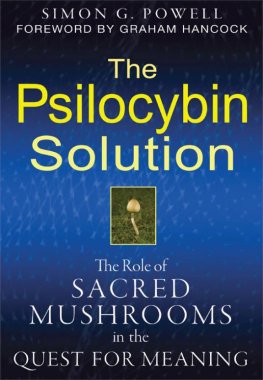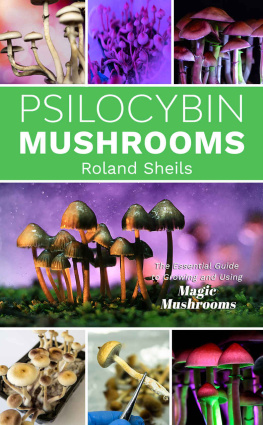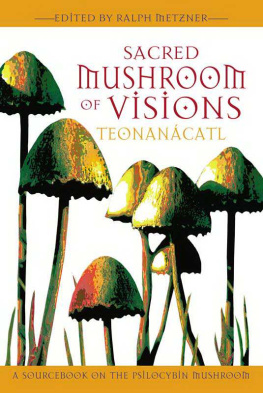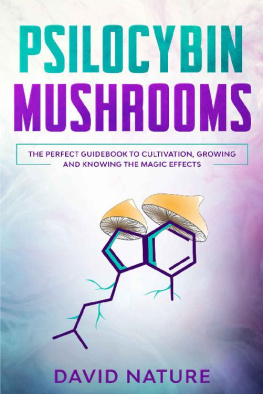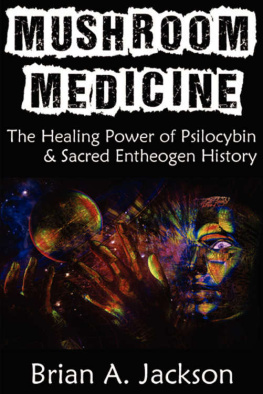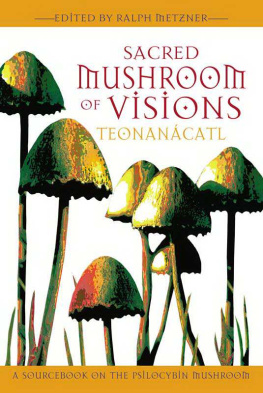Simon G. Powell - The Psilocybin Solution: The Role of Sacred Mushrooms in the Quest for Meaning
Here you can read online Simon G. Powell - The Psilocybin Solution: The Role of Sacred Mushrooms in the Quest for Meaning full text of the book (entire story) in english for free. Download pdf and epub, get meaning, cover and reviews about this ebook. year: 2011, publisher: Park Street Press, genre: Religion. Description of the work, (preface) as well as reviews are available. Best literature library LitArk.com created for fans of good reading and offers a wide selection of genres:
Romance novel
Science fiction
Adventure
Detective
Science
History
Home and family
Prose
Art
Politics
Computer
Non-fiction
Religion
Business
Children
Humor
Choose a favorite category and find really read worthwhile books. Enjoy immersion in the world of imagination, feel the emotions of the characters or learn something new for yourself, make an fascinating discovery.
- Book:The Psilocybin Solution: The Role of Sacred Mushrooms in the Quest for Meaning
- Author:
- Publisher:Park Street Press
- Genre:
- Year:2011
- Rating:5 / 5
- Favourites:Add to favourites
- Your mark:
The Psilocybin Solution: The Role of Sacred Mushrooms in the Quest for Meaning: summary, description and annotation
We offer to read an annotation, description, summary or preface (depends on what the author of the book "The Psilocybin Solution: The Role of Sacred Mushrooms in the Quest for Meaning" wrote himself). If you haven't found the necessary information about the book — write in the comments, we will try to find it.
Examines the neurochemistry underlying the visionary psilocybin experience
Explains how sacred mushrooms help restore our connection to the natural intelligence of Nature
Reviews the research on psilocybins ability to dispel anxiety in the terminally ill and its helpful effects on obsessive-compulsive disorder
It has been more than 50 years since sacred mushrooms were plucked from the shamanic backwaters of Mexico and presented to the modern world by R. Gordon Wasson. After sparking the psychedelic era of the 1960s, however, the divine mushroom returned underground from whence it mysteriously originated. Yet today, the mushrooms extraordinary influence is once again being felt by large numbers of people, due to the discovery of hundreds of wild psilocybin species growing across the globe.
In The Psilocybin Solution, Simon G. Powell traces the history of the sacred psilocybin mushroom and discusses the shamanic visionary effects it can induce. Detailing how psilocybin acts as a profound enhancer of consciousness and reviewing the research performed by the Multidisciplinary Association for Psychedelic Studies (MAPS), Johns Hopkins University, and the Heffter Research Institute on psilocybins ability to dispel anxiety in the terminally ill and its helpful effects on obsessive-compulsive disorder, he examines the neurochemistry, psychology, and spirituality underlying the visionary psilocybin experience, revealing the interface where physical brain and conscious mind meet. Showing that the existence of life and the functioning of mind are the result of a naturally intelligent, self-organizing Universe, he explains how sacred mushrooms provide a direct link to the wisdom of Nature and the meaning of life.
Simon G. Powell: author's other books
Who wrote The Psilocybin Solution: The Role of Sacred Mushrooms in the Quest for Meaning? Find out the surname, the name of the author of the book and a list of all author's works by series.


